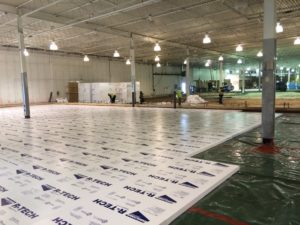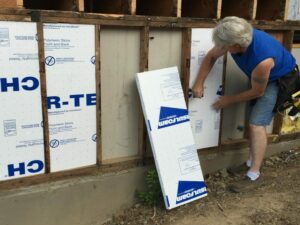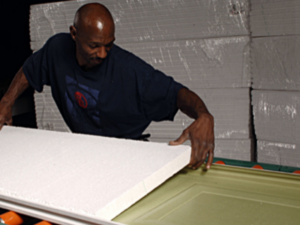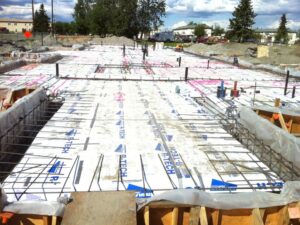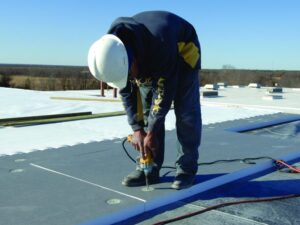Food for Thought: Lessons in Cold Storage
To provide 95,000 students in the greater Albuquerque area with well-balanced meals, the Albuquerque Public School District (APSD) commissioned the design of a 108,000-square-foot food and nutrition service facility with a cold storage warehouse. Of course, maintaining adequate temperatures for refrigerating and freezing perishable goods was critical to ensuring its success. Cold storage applications, particularly those located in arid climates with abundant sunshine like New Mexico, run the risk of warm, outside air seeping into the space and coming into contact with the building’s cool interior. If constructed without adequate insulation, bare slab concrete operates as a thermal bridge between the interior and the earth’s soil, creating ample area to conduct heat into or out of the building envelope. Case-in-point, the EPS Industry Alliance stresses that lack of insulation on foundations, crawl spaces and under slabs can account for up to 25 percent of a structure’s total energy loss.
The first lesson in cold storage applications—insulate below-grade
To ensure the APSD’s cold storage application achieves maximum insulation efficiency, building professionals turned to expanded polystyrene (EPS) for its resistance to moisture, constant thermal performance and compressive strength. Installed below the facility’s concrete slab floor, the EPS will work in tandem with factory-applied laminate polymeric facers to reduce the formation of condensation on foundation walls.
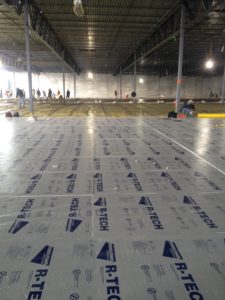
With less heat-conducting moisture present and a subsequential reduction in heat flow, the cold storage room will experience greater insulating effectiveness. Further, because EPS delivers R-values ranging from 3.6 to 4.2 per inch, it’s the only rigid foam insulation material to offer high, stable thermal resistance. In fact, EPS rated at R-4 per inch can provide up to two times greater insulating power than traditional materials of the same thickness. This also makes it possible to elevate R-values without the added labor costs of building up multiple insulation layers on site. Equally important, the composition of EPS does not diffuse over time, meaning its high R-value remains constant throughout its service life.
The second lesson in cold storage applications—EPS below-grade insulation also spells savings
Project designers were not only able to achieve the desired R-value, but they could also rely on EPS for its impressive strength. Engineered to offer compressive resistance values that range from 69 to 414 kPa (10 to 60 psi), EPS can also meet specific foundation load requirements with fewer layers of material. As a result, the APSD saved a whopping $20,000 on material costs
A proven solution for efficient and effective below-grade insulation, EPS keeps moisture at bay, delivers reliable thermal performance and provides compressive strength for the APSD’s cold storage warehouse. At the end of the day, high-performing EPS from Insulfoam helped project designers achieve maximum insulation efficiency and receive Leadership in Energy and Environmental Design (LEED) certification.

